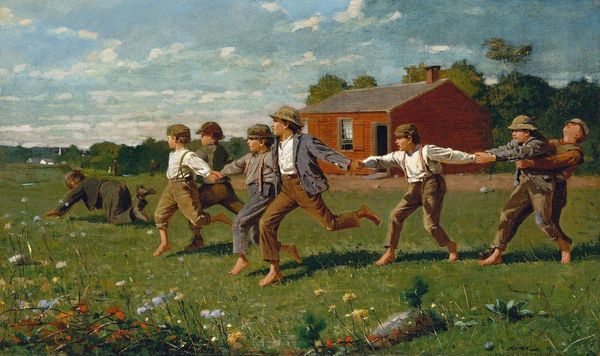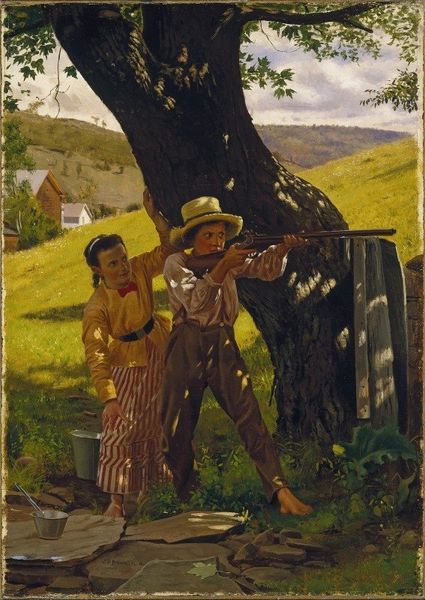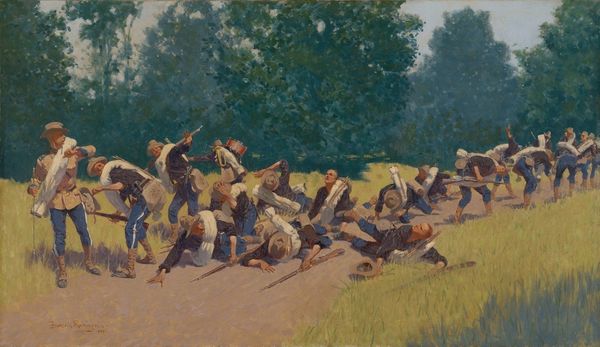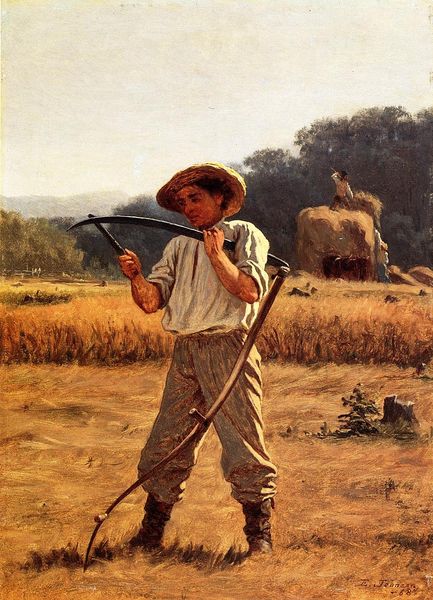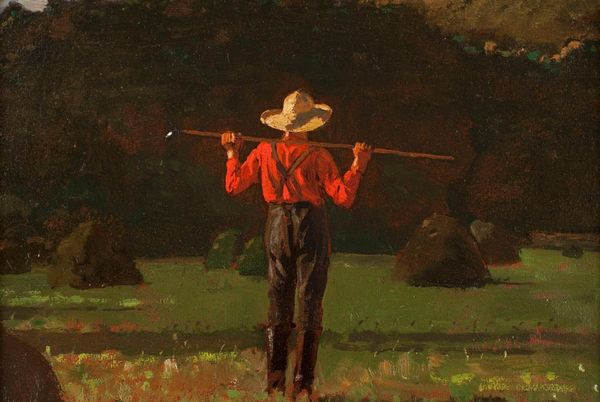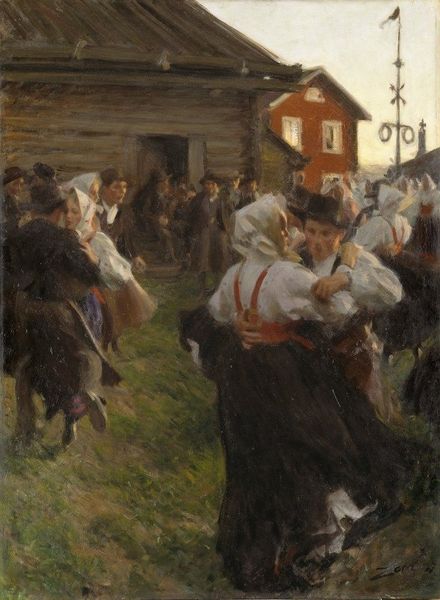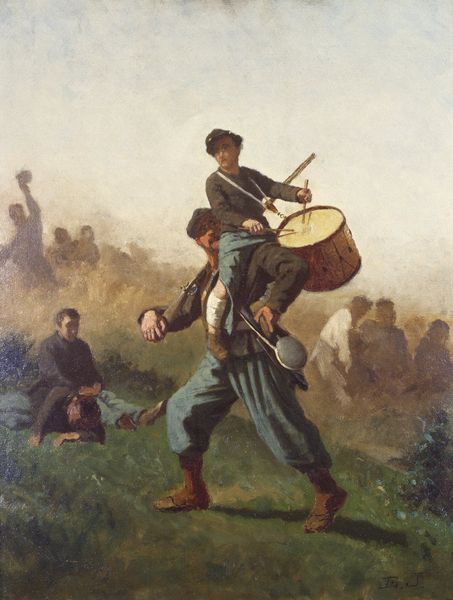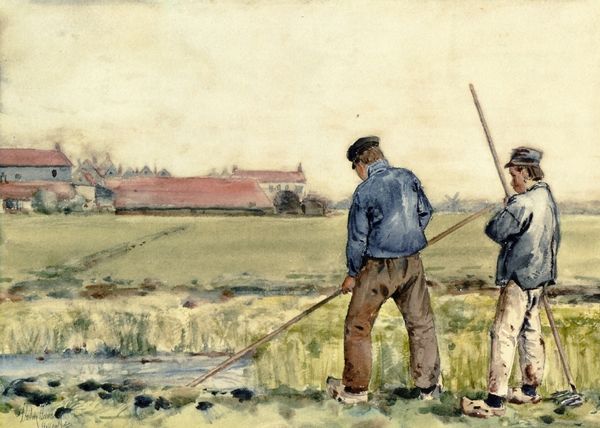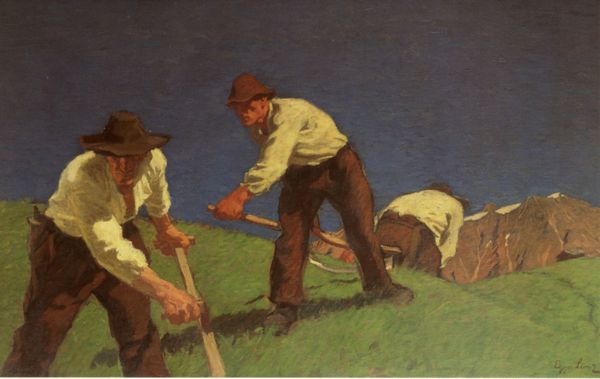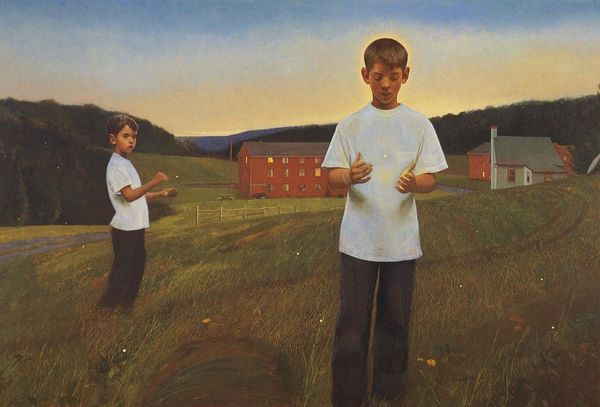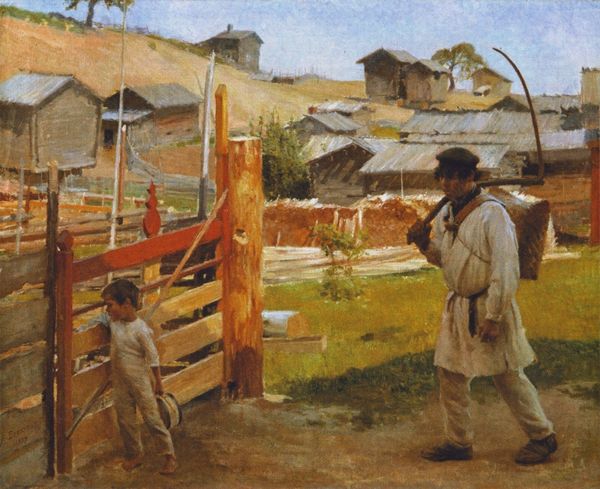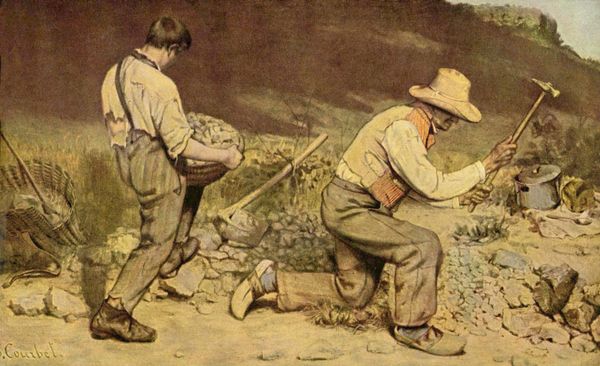
painting, oil-paint
#
painting
#
oil-paint
#
landscape
#
figuration
#
genre-painting
#
realism
Copyright: Public domain
Editor: This is Winslow Homer's "Snap the Whip," painted in 1872 using oil paints. It has a really joyful energy to it, and I love the details in the figures’ clothing. How do you interpret this work? Curator: Let’s consider the material conditions. Homer’s choice of oil on canvas speaks to a tradition of fine art, but his subject—children at play—challenges that boundary. How does the representation of labor, or perhaps the lack thereof, affect your understanding? Editor: I guess the lack of obvious labor is the point? They are kids playing, but there's also a red schoolhouse in the background; their education will equip them for certain types of future labor. It is almost as if that potential labor is what grants them their leisure in this moment? Curator: Precisely. The boys' bare feet connect them to the earth, to raw material. How does their activity contrast with the unseen labor that enables their schooling and free time? Also, note Homer’s process. He meticulously renders the fabric of their clothes, drawing attention to production. Editor: So, is Homer drawing our attention to this balance? This idyllic scene of American childhood, but underscored with the realities of production, consumption, and social class distinctions? Curator: In a way, yes. What kind of production enables leisure for those children specifically? We might ask what class, what kind of labor, might enable their carefree existence, and who precisely profits? Editor: That gives me a lot to consider regarding the deeper meanings within a seemingly simple genre scene. I initially overlooked the subtle commentary woven into the painting's surface. Thanks. Curator: Thinking about art through the lens of materials and social context opens new avenues of understanding and appreciation.
Comments
artera almost 2 years ago
⋮
When Snap the Whip appeared in 1872, Winslow Homer (1836-1910) was already a well-known and admired painter. However, this painting can be said to have ushered in a new period in Homer's career, a transition from his early years through to a more reflective, yet equally productive, middle period. The immense popularity of the work, probably his best loved, cemented his reputation and assured his place in American history. Homer made it his mission to chronicle the people who lived in a symbiotic relationship with the rugged American countryside around them. Snap the Whip shows a group of children playing the age-old game of the same name outside the "little red schoolhouse" in which they are taught. The white shirts of three of the boys are offset by the striking red of the schoolhouse. The figures the building, and the landscape behind are set in perfect balance. In one sense, Snap the Whip is a lighthearted piece that celebrates youth and play. It calls to mind the "good bad boys" of nineteenth-century American art and literature-boys like Huckleberry Finn. However, in its form and content there are a number of subtle tensions: the stillness of the land and the movement of the children, the running of some boys and the falling of others, the interior mental life of the schoolhouse and the "fun" outdoor life of the field. Homer's last depiction of a large group of peope. Snap the Whip has remained one of the fines. Champles of his briliantly original, quintessentian American, naturalistic style.
Join the conversation
Join millions of artists and users on Artera today and experience the ultimate creative platform.
